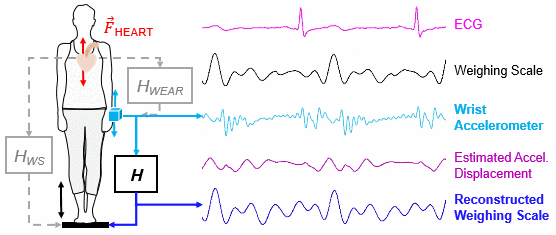Andrew D. Wiens and Omer T. Inan, Georgia Institute of Technology
Volume 62, Issue 5, Page: 1345-1354

Ballistocardiography (BCG) – the measurement of cardiac function from small movements of the body that occur with the beating heart – has received increasing attention in recent years. To date, the technique has been used to study whole-body movements using many different platforms including beds, chairs, weighing scales, and force plates. More recently, with the advent of small, low-power microelectromechanical systems (MEMS) accelerometers, BCG has been applied to local vibrations of the body with signals from wearable sensors. In particular, the ability to measure cardiac function with BCG from a wrist-mounted accelerometer is of high interest due to the introduction of smartwatches. However, despite several studies that have been conducted with wearable BCG, there is a lack of fundamental understanding of the physiology and mechanics that produce these wearable, localized signals. For example, body composition, the coupling between the wearable sensor and the skin, the orientation of the sensor, the location on the body where the sensor is placed, and the type of sensor are all presumed to affect the signal morphology.
To bridge this gap, we report a technique we developed to identify a linear time-invariant filter to transform a wearable BCG signal measuring local movements of the skin into a whole-body BCG measurement from a training, or calibration, step. A human subjects study was conducted to test this method with signals from an accelerometer placed on three locations on the body acquired simultaneously with BCG measured with a modified weighing scale. We found that the regularized system identification approach we present in this paper improved the quality of several widely-accepted BCG time and amplitude measurements during cross validation.
Keywords: ballistocardiography, system identification, wearable physiological monitoring

